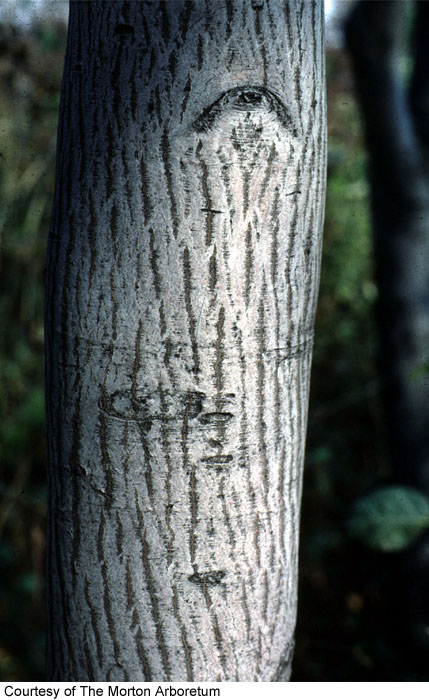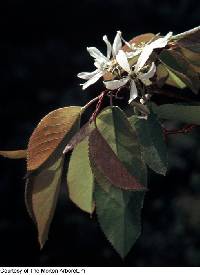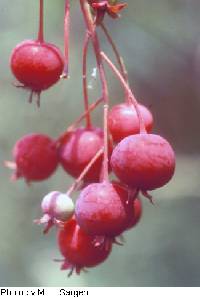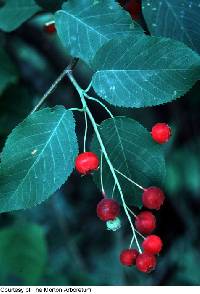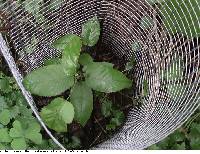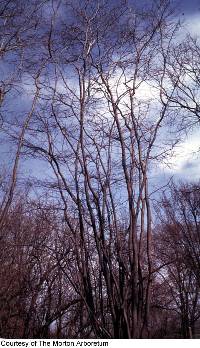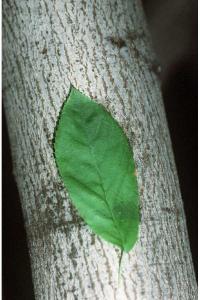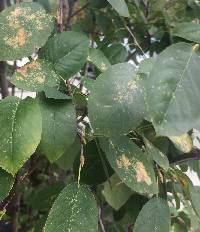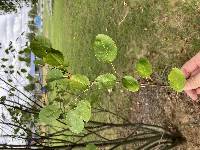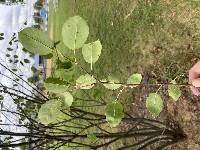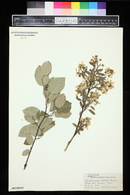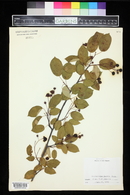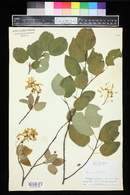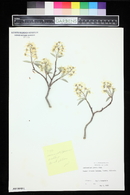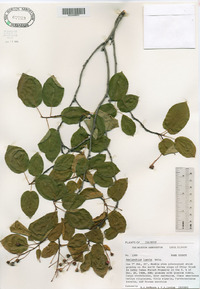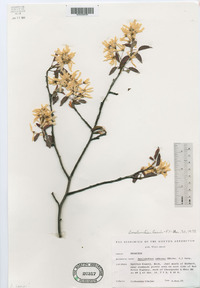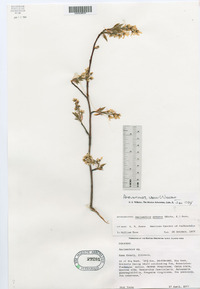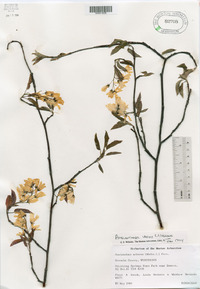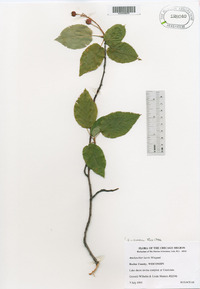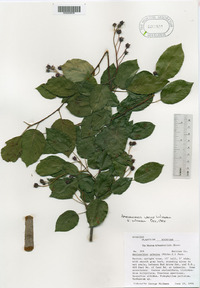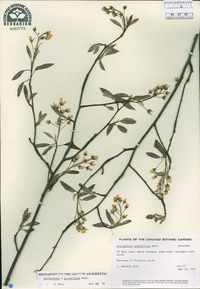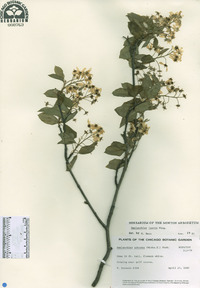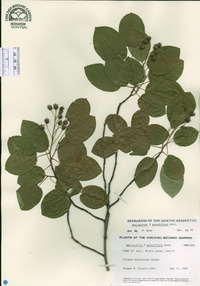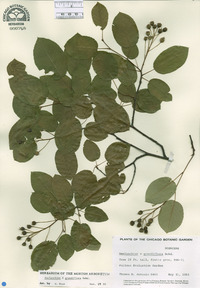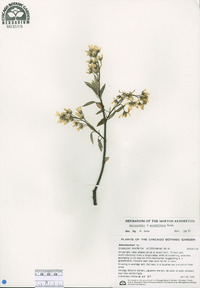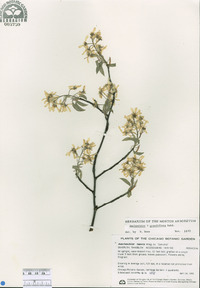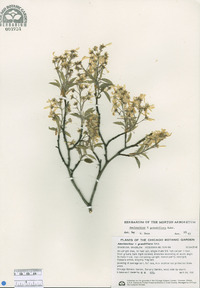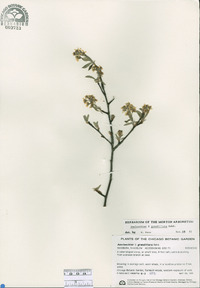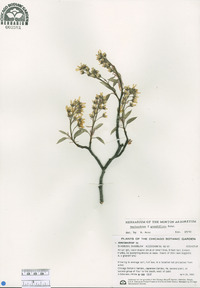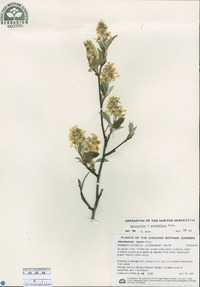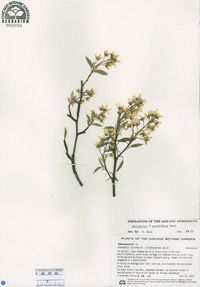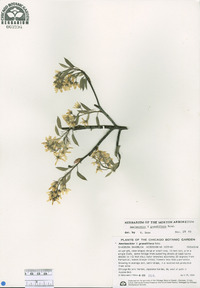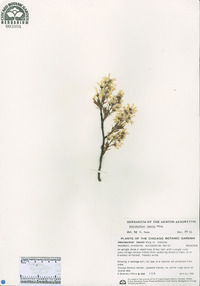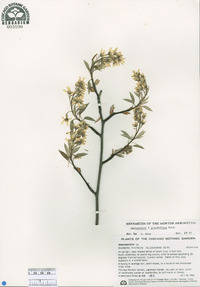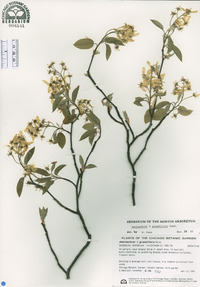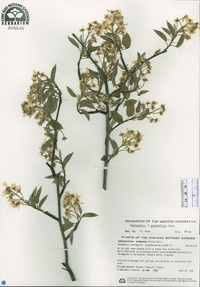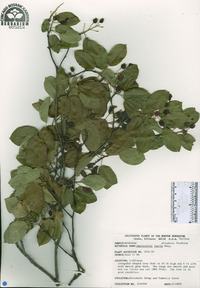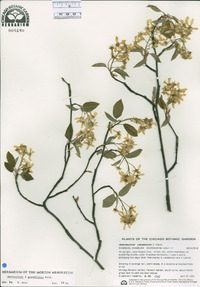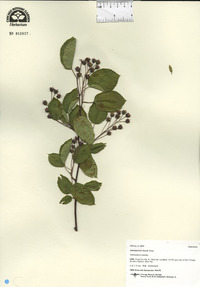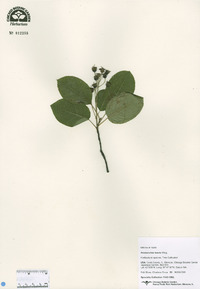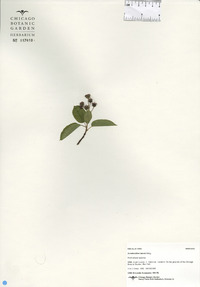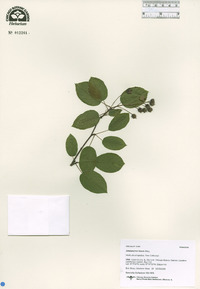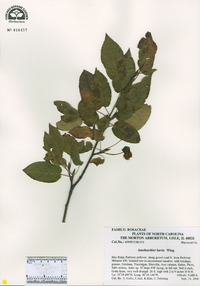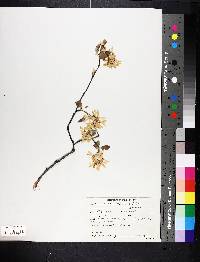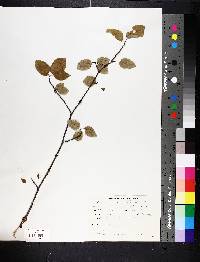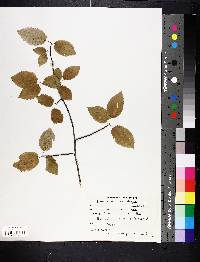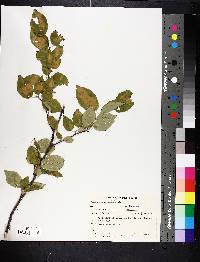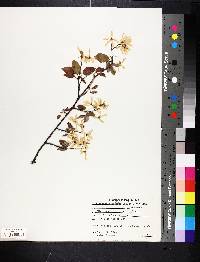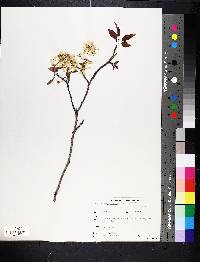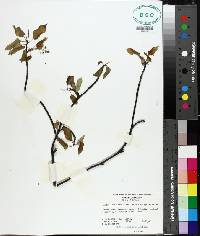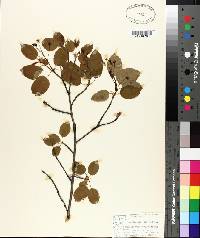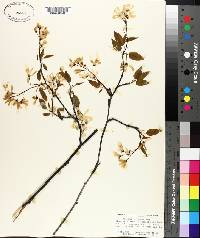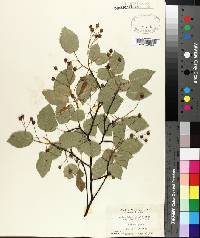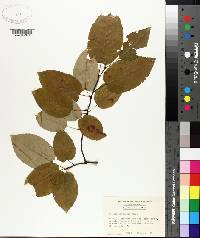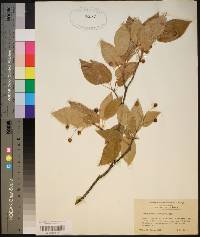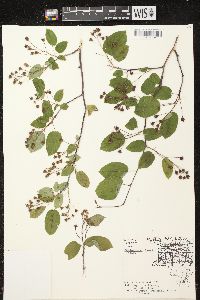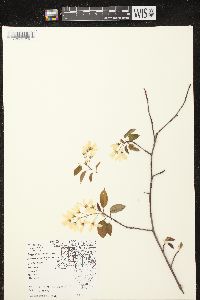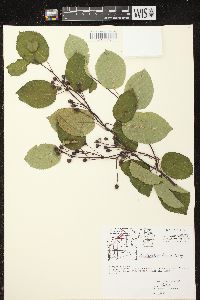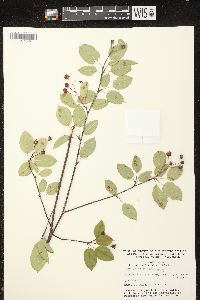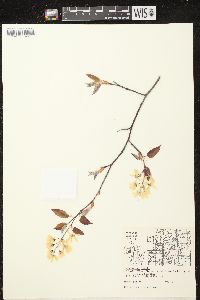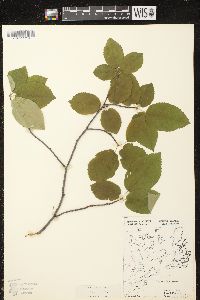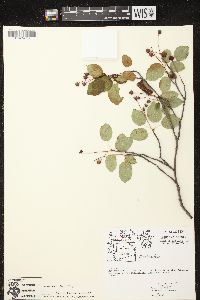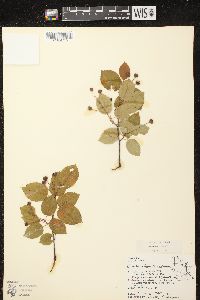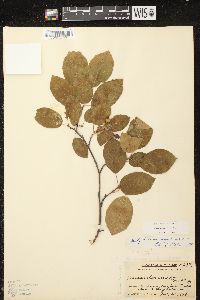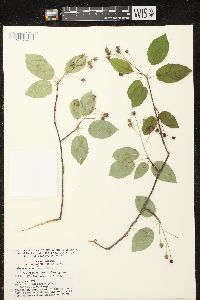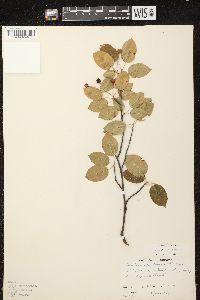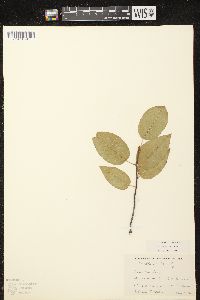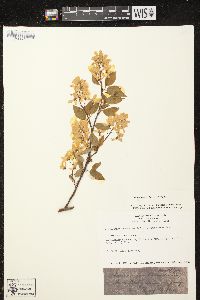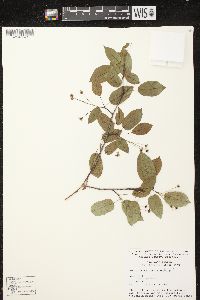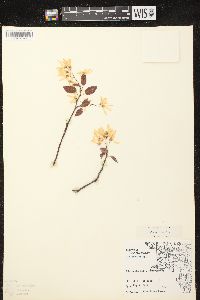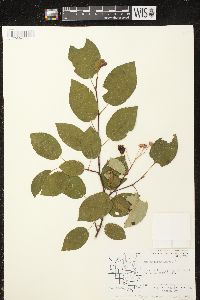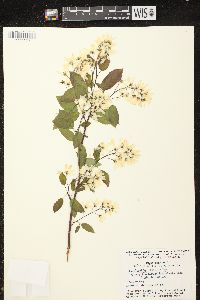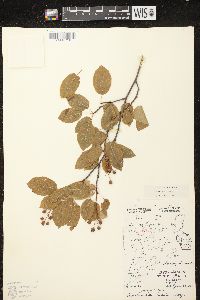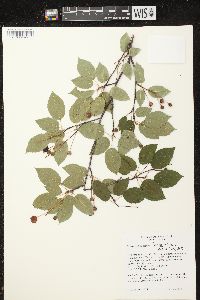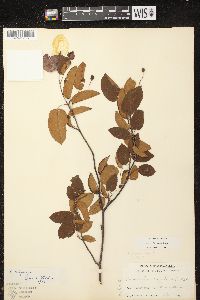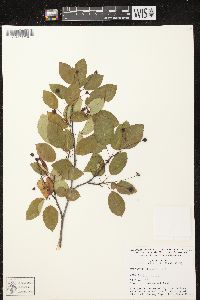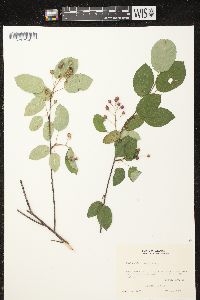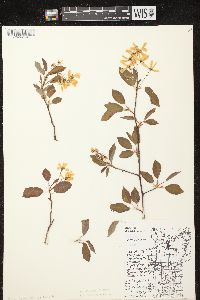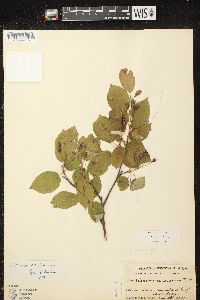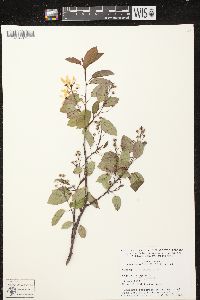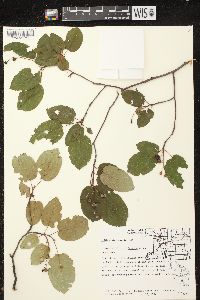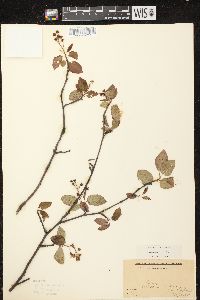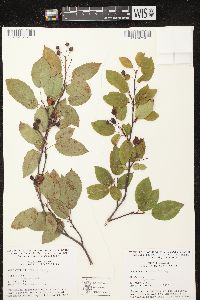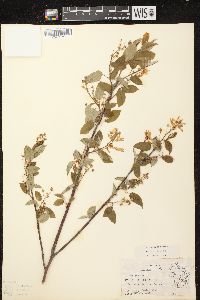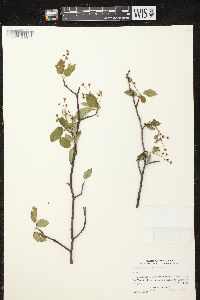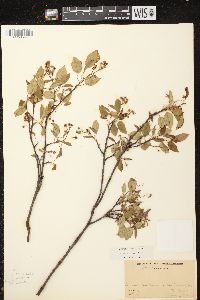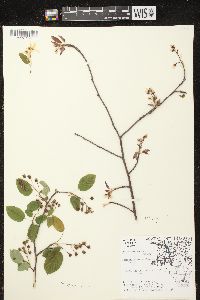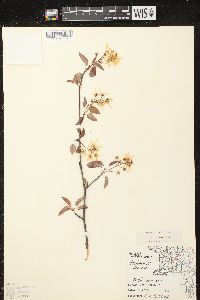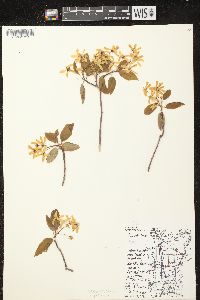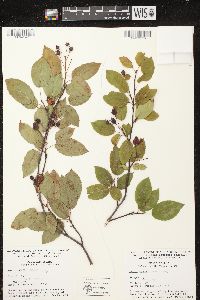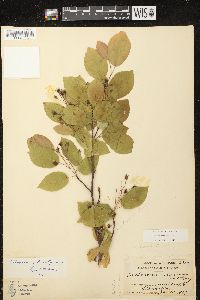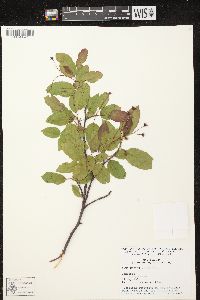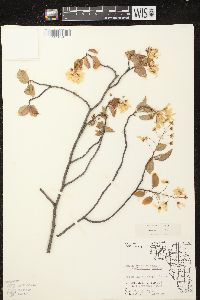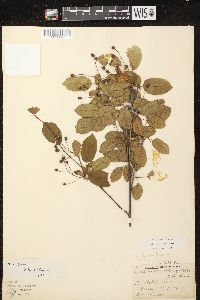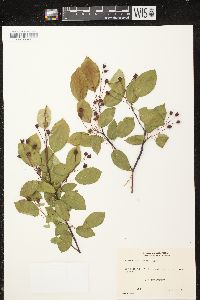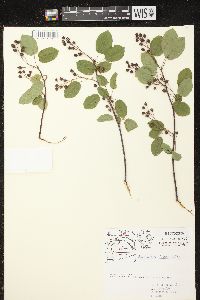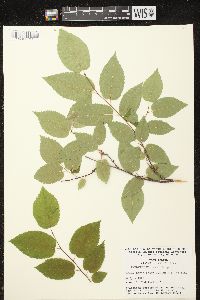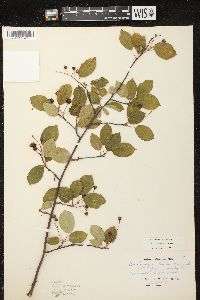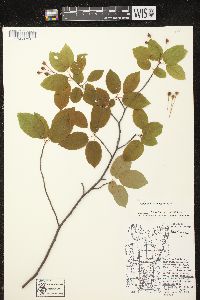Amelanchier laevis
|
|
|
|
Family: Rosaceae
Allegheny Service-Berry, more...smooth shadbush
[Pyrus botryapium] |
Shrub or small tree to 15 m tall Leaves: alternate, dark green, paler with a slight waxy whitish coating beneath (glaucescent), 3.2 - 8 cm long, elliptic to egg-shaped or oblong with a pointed tip and nearly heart-shaped or rounded base, more than twenty teeth per side, hairless or with a slightly hairy lower surface, with twelve to seventeen pairs of veins interconnecting near the margin. At flowering, the leaves are at least half-grown, bronze red, and nearly hairless. Flowers: borne on a slender, drooping, many-flowered inflorescence (raceme) 3 - 7 cm long, with nearly hairless individual flower stalks to 3 cm long. Each flower is white with a reflexed five-lobed corolla, narrow-oblong petals 1.5 - 2.2 cm long, and a hairless ovary tip. Fruit: berry-like (pome), clustered on 2.5 - 5 cm individual fruit stalks, purple or black, spherical, juicy, covered with a waxy whitish coating (glaucous), containing ten seeds. Twigs: slender, reddish brown, changing to dull grayish brown. Buds: green with a red tinge, 0.9 - 1.7 cm long, the inner scales lance-shaped with silky hairs along margin. Form: erect with irregular, spreading branches, not colony-forming. Similar species: Amelanchier arbora, Amelanchier interior, and Amelanchier laevis are the three Amelanchier species in the Chicago Region that are taller than 3 m at maturity. Amelanchier arborea has hairy flower stalks that are less than 2.5 cm long, dryish fruit, and leaves that are folded, hairy and lack bronze red coloring at flowering. Amelanchier interior has eight to ten pairs of leaf veins and a densely hairy ovary. Flowering: late April to mid May Habitat and ecology: Rare outside the high dunes area, but sometimes grows in bogs. Occurence in the Chicago region: native Etymology: Amelanchier is the old French name of a species in this genus. Laevis means smooth-stemmed. Author: The Morton Arboretum Tall, erect shrub or slender tree to 15 m; lvs elliptic to ovate-oblong or ovate, to 8 cm, shortly acuminate (or merely abruptly acute), finely and sharply serrate nearly to the rounded or subcordate base, the teeth more than 20 per side, and more than twice as many as the lateral veins, which curve and anastomose before reaching the margins; lvs at anthesis half-grown and glabrous or nearly so, with a prominent coppery-red cast that disappears before maturity; racemes lax, drooping in rain or soon after the twigs are cut; pedicels glabrous, 1-3 cm, the lower becoming 2.5-5 cm in fr; hypanthium glabrous externally, sep 3-4 mm, strongly reflexed after anthesis, tightly so in fr; pet slender, oblong to narrowly cuneate, mostly 15-22 mm; ovary glabrous on top; fr dark purple-red to black, sweet and juicy; mostly diploid, at least partly apomictic. Dry or moist upland woods; Nf. to Ont. and Minn., s. to Md., Ind., and Io., and in the mts. to Ga. and Ala. Apr.-June, a bit before no. 8 [Amelanchier arborea (F. Michx.) Fernald]. Gleason, Henry A. & Cronquist, Arthur J. 1991. Manual of vascular plants of northeastern United States and adjacent Canada. lxxv + 910 pp. ©The New York Botanical Garden. All rights reserved. Used by permission. From Flora of Indiana (1940) by Charles C. Deam Known in Indiana as smooth serviceberry or juneberry. Frequent to infrequent in the lake area, becoming infrequent to local southward. This species, with the preceding {Amelanchier canadensis] and their hybrids, is frequent on the high dunes facing Lake Michigan. It is also found in old tamarack bogs and interdunal flats and on the low and high banks of lakes and streams. This species is the largest of the genus in the state, sometimes reaching a diameter of 7 inches and a height of 40 feet. ...... Indiana Coefficient of Conservatism: C = 8 Wetland Indicator Status: N/A Diagnostic Traits: Shrub or small tree; leaves +/- glabrous when young; leaf margin near petiole with mostly 5–9 teeth per cm; lower pedicels of raceme to 3 cm; sepals spreading or recurved; petals >10 mm long; ovary inferior, its top glabrous. |
|
|
|

